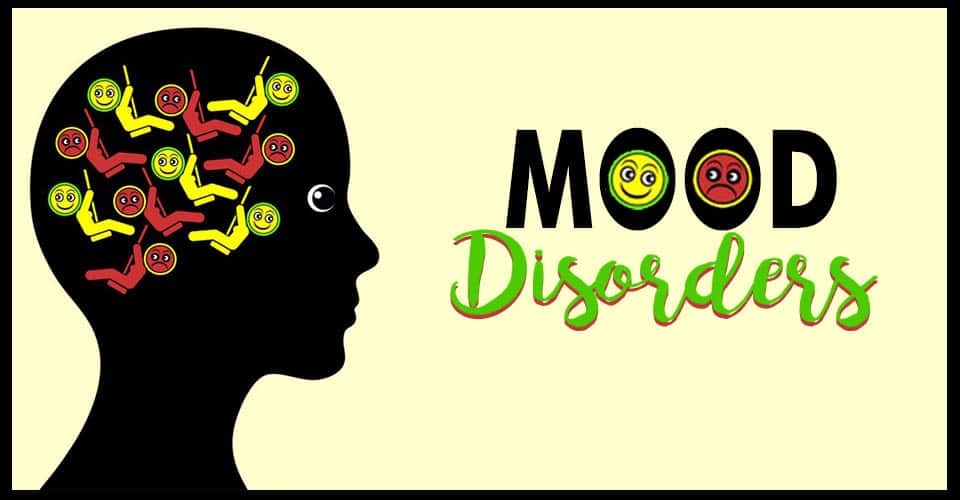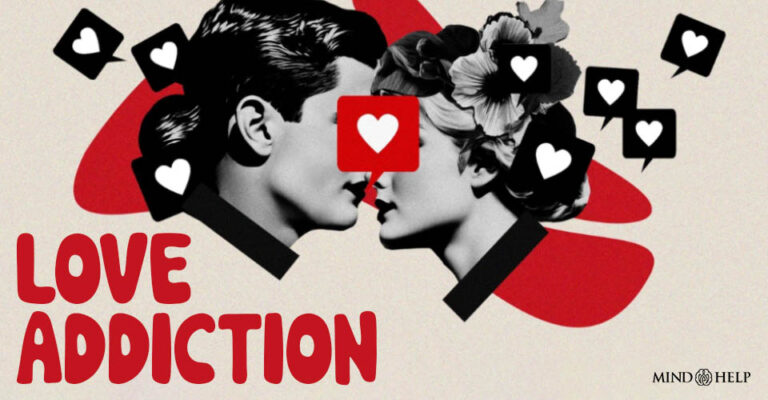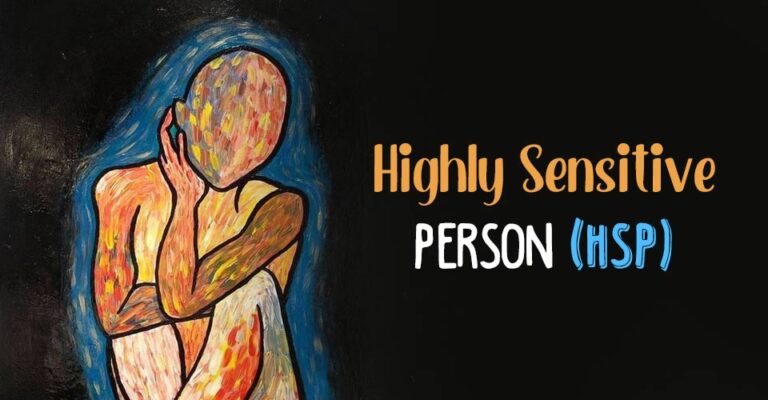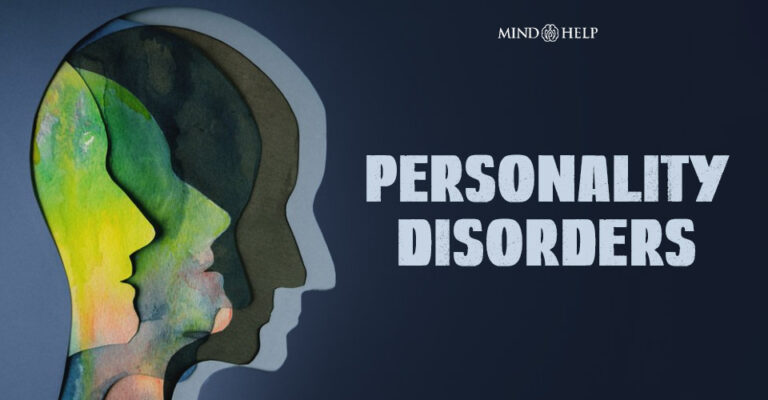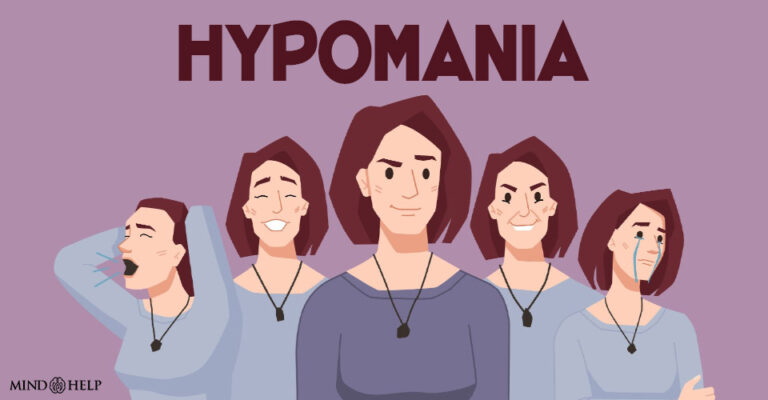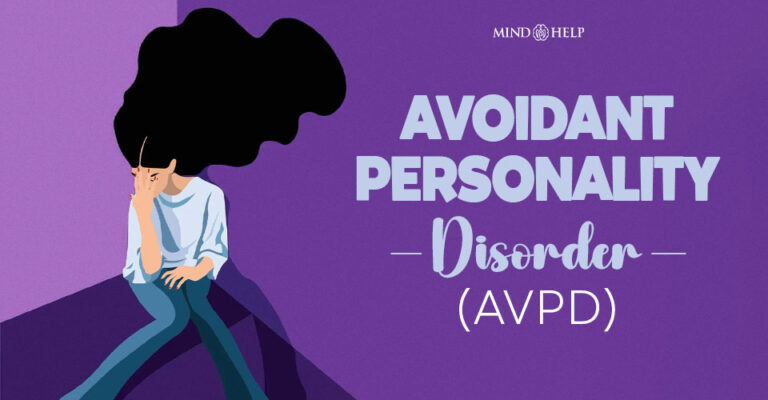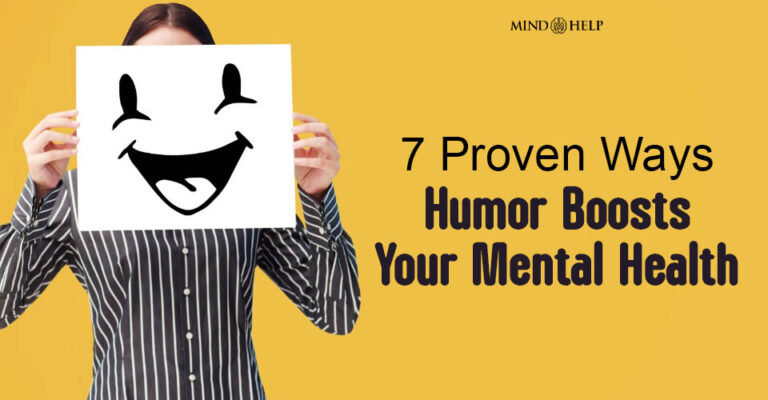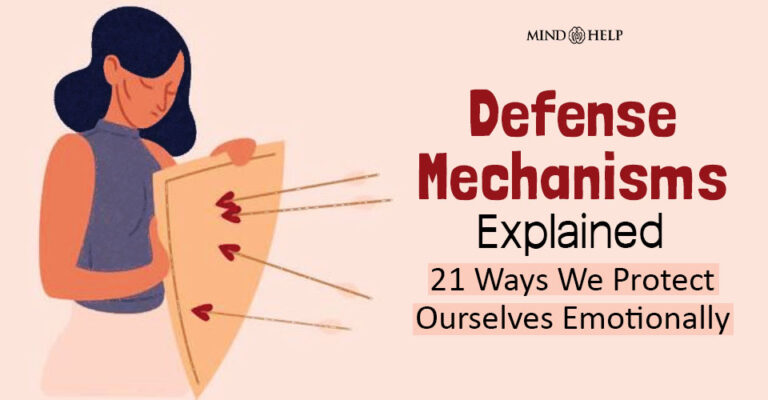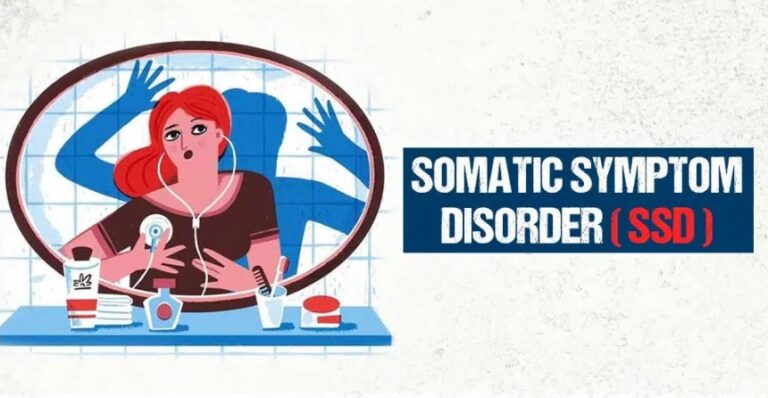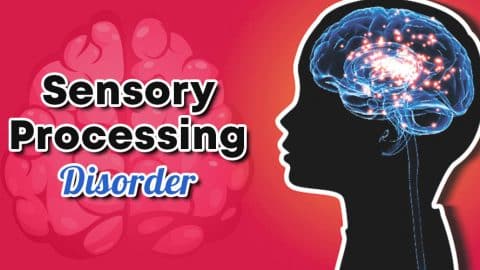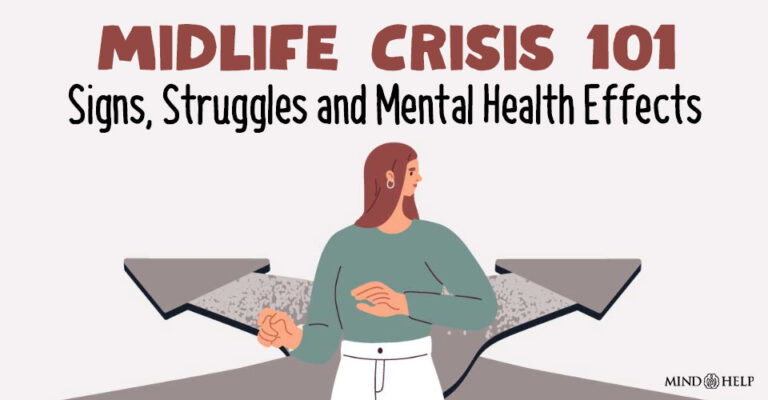Mood disorders are a group of disorders characterized by a distorted or inconsistent mood that interferes with the day to day functioning of the individual.
What Is Mood Disorders?
Mood disorders, also known as affective disorders, are characterized by disruptive emotions and unpredictable mood swings that interfere with the daily functioning of the individual. Mood disorders can often feel like a roller coaster of emotions wherein an individual may feel an extreme emotional high at one point and an extreme emotional low at the other. When such mood swings begin to interfere with daily life, it may be a sign of a mood disorder.
According to research 1 Sekhon S, Gupta V. Mood Disorder. [Updated 2021 Feb 15]. In: StatPearls [Internet]. Treasure Island (FL): StatPearls Publishing; 2021 Jan-. Available from: https://www.ncbi.nlm.nih.gov/books/NBK558911/ , the mood is characterized by sustained and pervasive feelings experienced internally by an individual but can influence their external behavior. “Mood disorders are described by marked disruptions in emotions (severe lows called depression or highs called hypomania or mania),” explains the researchers. Some common psychiatric disorders that may be categorized into this classification include:
- Major depressive disorder
- Persistent depressive disorder
- Bipolar disorder
- Disruptive mood dysregulation disorder
- Hypomania
- Cyclothymia
- Premenstrual dysphoric disorder
Mental health conditions identified as affective disorders can increase mortality and morbidity. A 2018 study 2 Rakofsky J, Rapaport M. Mood Disorders. Continuum (Minneap Minn). 2018 Jun;24(3, BEHAVIORAL NEUROLOGY AND PSYCHIATRY):804-827. doi: 10.1212/CON.0000000000000604. PMID: 29851879. states, “Mood disorders are common in neurologic settings. They are disabling and increase morbidity and mortality.”
Understanding Mood Disorders
The three major states of mood disorders usually include:
- Depressive
- Manic
- Bipolar
A depressive mood is characterized by a persistent feeling of sadness and lack of interest. Mania is characterized by elevated moods and abnormal euphoria that affects the mood, thoughts, and behavior of the individual. Bipolar disorders are a combination of depressive and manic moods. However, it is important to keep in mind these disorders may vary in intensity and severity.
In case an individual is experiencing symptoms of any mood disorders, it may interfere with their mood, cognition, sleep, behavior, or overall health. In addition to this, they may also have suicidal thoughts or tendencies. In such cases, it is important to pay close attention to the individual and seek professional help. People with mood disorders also feel socially isolated, restless, and excessively irritable.
These disorders can be treated with therapy and medications. Even though patients can recover from some mood disorders, others may require lifelong medication and therapy to keep the symptoms in check. If left untreated, it can be detrimental to the physical and mental well-being of the patient.
Prevalence Of Mood Disorders
A 2018 study found that depression has a lifetime prevalence rate of almost 5% to 17%. Women have twice the prevalence rate than men. The annual prevalence rate of depression is 7.1% in US adults. On the other hand, the annual prevalence rate of bipolar disorder is 2.8%. A 2010 study 3 Merikangas KR, He JP, Burstein M, Swanson SA, Avenevoli S, Cui L, Benjet C, Georgiades K, Swendsen J. Lifetime prevalence of mental disorders in U.S. adolescents: results from the National Comorbidity Survey Replication–Adolescent Supplement (NCS-A). J Am Acad Child Adolesc Psychiatry. 2010 Oct;49(10):980-9. doi: 10.1016/j.jaac.2010.05.017. Epub 2010 Jul 31. PMID: 20855043; PMCID: PMC2946114. pointed out that mood disorders are commonly prevalent in children and adolescents with an estimated rate of 15% suffering from any mood disorder, and 12% have a mood disorder with severe impairment. A 2011 study 4 Merikangas KR, Jin R, He JP, Kessler RC, Lee S, Sampson NA, Viana MC, Andrade LH, Hu C, Karam EG, Ladea M, Medina-Mora ME, Ono Y, Posada-Villa J, Sagar R, Wells JE, Zarkov Z. Prevalence and correlates of bipolar spectrum disorder in the world mental health survey initiative. Arch Gen Psychiatry. 2011 Mar;68(3):241-51. doi: 10.1001/archgenpsychiatry.2011.12. PMID: 21383262; PMCID: PMC3486639. found that the lifetime prevalence of bipolar disorder subtypes is 0.6% for bipolar I, 0.4% for bipolar II, and 2.4% for bipolar spectrum disorder.
Symptoms Of Mood Disorders
Mood disorders can interfere with the daily functioning of the individual. Some people, especially children, may have physical symptoms of depression such as unexplained headaches or stomach aches. The signs and symptoms also depend on the type and severity of the disorder. Some of the signs and symptoms are as follows:
- Lack of interest that they once enjoyed
- Eating more or less than usual
- Insomnia
- Lack of sleep
- Fatigue
- Crying
- Anxiety
- Lack of energy
- Feeling isolated, sad, hopeless, and worthless
- Difficulty concentrating
- Facing problems while making decisions
- Feeling guilty
- Irritability
- Suicidal thoughts or tendencies
The symptoms tend to be ongoing and ultimately start to interfere with the daily functioning of the individual’s life. These are not thoughts that normal people usually experience occasionally.
Types Of Mood Disorders
According to the Diagnostic and Statistical Manual of Mental Disorders (DSM 5), these disorders are divided into two groups: bipolar disorder and related disorders, and depressive disorders. The main types of mood disorders are as follows:
1. Major depressive disorder
Depression 5 Chand SP, Arif H. Depression. [Updated 2020 Nov 18]. In: StatPearls [Internet]. Treasure Island (FL): StatPearls Publishing; 2021 Jan-. Available from: https://www.ncbi.nlm.nih.gov/books/NBK430847/ is a condition characterized by a constant feeling of sadness and a lack of interest that interferes with the day-to-day activities of the individual. This condition is not considered a weakness of the individual and requires serious psychological intervention to recover from it. It is also known as clinical depression or major depression.
2. Bipolar I disorder
One of the most important types of mood disorders are bipolar disorders 6 Hilty, D. M., Leamon, M. H., Lim, R. F., Kelly, R. H., & Hales, R. E. (2006). A review of bipolar disorder in adults. Psychiatry (Edgmont (Pa. : Township), 3(9), 43–55. . Bipolar I disorder was previously known as manic depression. Bipolar I disorder is characterized by elevated mood or irritable moods with increased energy or activity. When experiencing manic episodes, people with bipolar I disorder often engage in activities that can result in negative consequences for themselves or others.
3. Bipolar II disorder
In order to be diagnosed with bipolar II disorder, the patient must have at least one episode of current or past hypomania and at least one episode of current or past major depressive disorder, but no history of manic episodes.
4. Cyclothymic disorder
Cyclothymic disorder 7 Bielecki JE, Gupta V. Cyclothymic Disorder. [Updated 2021 Mar 16]. In: StatPearls [Internet]. Treasure Island (FL): StatPearls Publishing; 2021 Jan-. Available from: https://www.ncbi.nlm.nih.gov/books/NBK557877/ is a mild mood disorder characterized by mood swings between short periods of mild depression and hypomania. It is important to take into account that in this case, the highs and lows of mood swings don’t become severe as in the case of a major depressive episode.
5. Premenstrual dysphoric disorder
This condition is characterized by mood changes and irritability that usually occur during the premenstrual phase of a woman’s cycle and tends to reduce with the onset of menstruation.
6. Disruptive dysregulation disorder
This disorder was recently added to the Diagnostic Statistical Manual of Mental Disorders (DSM 5) for children up to 18 years of age. This condition was characterized by repeated irritability and anger, and frequent episodes of temper outbursts without any significant provocation.
7. Persistent depressive disorder (PDD)
Also known as Dysthymia 8 Patel RK, Rose GM. Persistent Depressive Disorder. [Updated 2020 Oct 7]. In: StatPearls [Internet]. Treasure Island (FL): StatPearls Publishing; 2021 Jan-. Available from: https://www.ncbi.nlm.nih.gov/books/NBK541052/ , it is a mild form of depression. The persistent depressive disorder differs from major depression in terms of duration of symptoms as PDD symptoms can last for two or more years.
Read More About Bipolar Disorders Here
Causes Of Mood Disorders
The exact cause of these disorders is still unknown. However, some of the causes that may contribute to developing these conditions are:
1. Biological factors
Neurotransmitters play an important role in developing these disorders. Imbalance in the levels of neurotransmitters such as serotonin and norepinephrine can contribute to the development of mood disorders. A decrease in serotonin levels is commonly associated with depression. A 2009 study 9 Ahn, W. K., Proctor, C. C., & Flanagan, E. H. (2009). Mental Health Clinicians’ Beliefs About the Biological, Psychological, and Environmental Bases of Mental Disorders. Cognitive science, 33(2), 147–182. https://doi.org/10.1111/j.1551-6709.2009.01008.x pointed out that biological factors may be a contributing factor for developing mood disorders.
2. Medical conditions
Medical conditions that lead to these disorders include:
- Brain tumors
- CNS syphilis
- Delirium
- Encephalitis
- Influenza
- Metabolic changes associated with hemodialysis
- Multiple sclerosis
- Q fever
- Cancer
- AIDS
- Hypothyroidism
3. Medications
A 2008 study 10 Rogers, D., & Pies, R. (2008). General medical with depression drugs associated. Psychiatry (Edgmont (Pa. : Township), 5(12), 28–41. found that certain drugs and medications may also influence mood disorders. Some of these medications include:
- Amphetamines
- Cocaine
- Procarbazine
- Steroids
4. Genetic factors
Genetic factors may also play a role in developing these disorders. A 2020 twin study 11 Palma-Gudiel H, Córdova-Palomera A, Navarro V, Fañanás L. Twin study designs as a tool to identify new candidate genes for depression: A systematic review of DNA methylation studies. Neurosci Biobehav Rev. 2020 May;112:345-352. doi: 10.1016/j.neubiorev.2020.02.017. Epub 2020 Feb 14. PMID: 32068032. found that certain genes may be a cause of these conditions. People with a family history are more likely to develop it. A 2012 study 12 Kolaitis G. [Mood disorders in childhood and adolescence: continuities and discontinuities to adulthood]. Psychiatriki. 2012 Jun;23 Suppl 1:94-100. Greek, Modern. PMID: 22796978. pointed out that parental mood disorder is an essential and constant risk factor for developing this condition.
5. Hormonal factors
Increased HPA (Hypothalamic pituitary-adrenal axis) activity is often associated with stress and depression. High levels of TSH (Thyroid-stimulating hormone) may also contribute to developing these disorders such as depression. A 2002 study 13 Schmidt, P. J., & Rubinow, D. R. (2002). Reproductive hormonal treatments for mood disorders in women. Dialogues in clinical neuroscience, 4(2), 211–223. https://doi.org/10.31887/DCNS.2002.4.2/pschmidt found that reproductive endocrine-related mood disorders refer to depressive-like disorders in which the appearance of mood disturbances occurs in temporal association with a change in reproductive function.
6. Psychosocial factors
A 2020 study 14 Juruena MF, Eror F, Cleare AJ, Young AH. The Role of Early Life Stress in HPA Axis and Anxiety. Adv Exp Med Biol. 2020;1191:141-153. doi: 10.1007/978-981-32-9705-0_9. PMID: 32002927. pointed out that traumatic events or stressful life events such as the death of a parent or sibling, and childhood abuse have been found to be a great risk factor for developing these conditions later in life. Personality disorders such as borderline personality disorder or obsessive compulsive disorder are also associated with depression.
7. Neurological factors
Certain areas of the brain are responsible for governing and controlling our feelings and emotions such as the amygdala and orbitofrontal cortex. Brain imaging has displayed an enlarged amygdala in patients with mood disorders. This indicates that certain abnormalities in these areas may contribute to the development of these disorders. A 2020 study 15 Kloiber S, Rosenblat JD, Husain MI, Ortiz A, Berk M, Quevedo J, Vieta E, Maes M, Birmaher B, Soares JC, Carvalho AF. Neurodevelopmental pathways in bipolar disorder. Neurosci Biobehav Rev. 2020 May;112:213-226. doi: 10.1016/j.neubiorev.2020.02.005. Epub 2020 Feb 5. PMID: 32035092. indicated that ventricular expansion results from repeated episodes of these disorders.
Diagnosis Of Mood Disorders
The doctor will evaluate the family history of the patient, which may be followed by a mental status examination. They may also conduct other tests to rule out other related conditions such as substance abuse disorder. There are specific rating scales that are available for the evaluation and detection of mood disorders. Some of the scales that are used to detect these disorders are as follows:
1. Hamilton Rating Scale for Depression (HAM-D)
This scale 16 Carrozzino D, Patierno C, Fava GA, Guidi J. The Hamilton Rating Scales for Depression: A Critical Review of Clinimetric Properties of Different Versions. Psychother Psychosom. 2020;89(3):133-150. doi: 10.1159/000506879. Epub 2020 Apr 14. PMID: 32289809. is a 17 item depression rating scale administered by clinicians. It is used to rate depressed moods, sleep issues, concentration levels, guilt, suicidal tendencies, anxiety levels and somatic symptoms on a 3 or 5 point scale. The normal level is between 0 to 7. A total score of 20 requires psychological intervention.
2. Montgomery Asberg Depression Rating Scale (MADRS)
This questionnaire 17 Hobden, B., Schwandt, M. L., Carey, M., Lee, M. R., Farokhnia, M., Bouhlal, S., Oldmeadow, C., & Leggio, L. (2017). The Validity of the Montgomery-Asberg Depression Rating Scale in an Inpatient Sample with Alcohol Dependence. Alcoholism, clinical and experimental research, 41(6), 1220–1227. https://doi.org/10.1111/acer.13400 is used to diagnose depression in patients. This scale assesses sadness, inner tension, appetite, sleep, suicidal tendencies on a scale of 0 to 60. The normal rates are between 0 to 6. On the other hand, 7 to 19 is considered as mild depression, 20 to 34 as moderate depression, and a score more than 34 is considered as severe depression.
3. Young Mania Rating Scale (YMRS)
This scale 18 Lukasiewicz, M., Gerard, S., Besnard, A., Falissard, B., Perrin, E., Sapin, H., Tohen, M., Reed, C., Azorin, J. M., & Emblem Study Group (2013). Young Mania Rating Scale: how to interpret the numbers? Determination of a severity threshold and of the minimal clinically significant difference in the EMBLEM cohort. International journal of methods in psychiatric research, 22(1), 46–58. https://doi.org/10.1002/mpr.1379 is used to administer mania. It is an 11 item scale, with 4 items that include assessment of irritability, speech, thought content, and disruptive behavior graded on a 0 to 8 scale. Other items include elevated mood, increase in motor activity, libido, sleep, appearance, and insight are rated on a scale of 0 to 4. Scores that are less than 12 indicate remission, 13 to 25 is considered as moderate, and 38 to 60 as severe mania.
Treatment For Mood Disorders
It is essential to diagnose and treat the symptoms on time in order to decrease the associated morbidity and mortality. The primary methods of treatment for these disorders are usually medications and therapy. Some of the treatment methods that are usually adopted are as follows:
1. Medications
Some mood disorders can be treated with medications. A 2011 study 19 Li, X., Frye, M. A., & Shelton, R. C. (2012). Review of pharmacological treatment in mood disorders and future directions for drug development. Neuropsychopharmacology : official publication of the American College of Neuropsychopharmacology, 37(1), 77–101. https://doi.org/10.1038/npp.2011.198 demonstrated the effectiveness of prescribing medications to patients with mood disorders. Patients with bipolar disorder can be prescribed with some of the following medication:
- Mood stabilizers such as lithium or valproic acid
- Atypical antipsychotics such as risperidone, olanzapine, quetiapine, ziprasidone, aripiprazole
People with depression may be prescribed with the following:
- Selective serotonin reuptake inhibitors (SSRIs) such as Sertraline, fluvoxamine, citalopram, escitalopram, and paroxetine
- Serotonin-norepinephrine reuptake inhibitors (SNRI) such as venlafaxine, desvenlafaxine, duloxetine, milnacipran, and levomilnacipran
- Atypical antidepressants such as bupropion and mirtazapine.
- Tricyclic antidepressants such as desipramine, nortriptyline, imipramine, and amitriptyline
2. Psychotherapy
Patients suffering from depression or other mood disorders can benefit from psychotherapy. Some of the methods that are used are as follows:
A. Cognitive behavioral therapy (CBT)
CBT involves the evaluation of negative thoughts and patterns that govern negative behavior. These thoughts are then replaced with positive thoughts to attain the desired behavior. Cognitive behavioral therapy is the most extensively adopted method for treating depression. A 2010 study 20 Driessen, E., & Hollon, S. D. (2010). Cognitive behavioral therapy for mood disorders: efficacy, moderators and mediators. The Psychiatric clinics of North America, 33(3), 537–555. https://doi.org/10.1016/j.psc.2010.04.005 found CBT is efficacious in the acute treatment of depression and may be a viable alternative to antidepressant medications.
Read More About Cognitive Behavioral Therapy Here
B. Mindfulness-based Cognitive Therapy (MBCT)
Mindfulness-based cognitive therapy combines the elements of cognitive behavioral therapy with mindfulness-based stress reduction into an 8 session group program. This intervention was initially conceived for relapse prevention in people with recurrent depression.
However, it is also applied to various psychiatric conditions. This therapy is found to be beneficial in treating mood swings associated with these conditions and avoiding relapse. A 2012 research findings 21 Sipe WE, Eisendrath SJ. Mindfulness-based cognitive therapy: theory and practice. Can J Psychiatry. 2012 Feb;57(2):63-9. doi: 10.1177/070674371205700202. PMID: 22340145. from randomized controlled trials suggest that MBCT is a useful intervention for relapse prevention in patients with recurrent depression in combination with antidepressants.
C. Acceptance and Commitment Therapy (ACT)
In this therapy, patients are taught mindfulness skills that can help them lead a normal life and form a steady pattern to follow. The ACT practitioners help the patient to manage and control emotional experiences by creating challenges. By addressing these challenges, patients are better equipped to handle stress and engage in value-based actions that support their well-being.
This therapy also involves accepting one’s emotional experiences the way they come with an open and accepting perspective. The patient is also required to be committed to making changes and engage in behaviors that help them reach their treatment goals. A 2016 study 22 Pankowski S, Adler M, Andersson G, Lindefors N, Svanborg C. Group acceptance and commitment therapy (ACT) for bipolar disorder and co-existing anxiety – an open pilot study. Cogn Behav Ther. 2017 Mar;46(2):114-128. doi: 10.1080/16506073.2016.1231218. Epub 2016 Sep 19. PMID: 27647353. found that ACT has the potential to be an effective treatment for BD patients with co-existing anxiety.
D. Interpersonal psychotherapy
Research 23 Markowitz, J. C., & Weissman, M. M. (2004). Interpersonal psychotherapy: principles and applications. World psychiatry : official journal of the World Psychiatric Association (WPA), 3(3), 136–139. has demonstrated that depression often follows a disturbing change in one’s interpersonal environment such as the death of a loved one, a career move, or divorce. Interpersonal psychotherapy attempts to address these drastic changes that the patient experiences. This therapy attempts to improve the quality of a patient’s interpersonal relationships and social functioning in order to reduce stress. A 2013 study 24 van Hees, M. L., Rotter, T., Ellermann, T., & Evers, S. M. (2013). The effectiveness of individual interpersonal psychotherapy as a treatment for major depressive disorder in adult outpatients: a systematic review. BMC psychiatry, 13, 22. https://doi.org/10.1186/1471-244X-13-22 found the effectiveness of interpersonal psychotherapy combined with medications for treating patients with mood disorders.
E. Dialectical behavioral therapy (DBT)
This therapy is another form of cognitive behavioral therapy that involves mindfulness, distress tolerance, and emotional regulation. DBT is usually used to treat people with self-destructive thoughts, behaviors, and suicidal tendencies. The primary goals of this therapy are:
- Living in the moment
- Coping mechanism
- Regulating their emotions
- Improving interpersonal relationships
A 2017 study 25 Eisner, L., Eddie, D., Harley, R., Jacobo, M., Nierenberg, A. A., & Deckersbach, T. (2017). Dialectical Behavior Therapy Group Skills Training for Bipolar Disorder. Behavior therapy, 48(4), 557–566. https://doi.org/10.1016/j.beth.2016.12.006 found that DBT showed increases in mindfulness and distress tolerance and decreases in emotional dysregulation and emotion reactivity post-treatment. It was also found to be efficacious in treating patients with mood disorders.
3. Lifestyle Changes
Adopting a healthy lifestyle can go a long way in managing the symptoms of mood disorders. Some of them are:
A. Following a healthy diet
A healthy diet routine goes a long way in improving one’s mood. A 2017 study found that the symptoms of people with moderate to severe depression significantly improved when they received nutritional counseling sessions and ate a healthy diet for 12 weeks. Almost 32% of the participants with depressive symptoms improved enough to achieve remission criteria.
B. Regularly exercising
Exercising regularly can have a significant impact on depression, anxiety, and other mood disorders. It also helps to relieve stress, improves memory and quality of sleep, and the overall mood of the individual. A 2004 study 26 Guszkowska M. Wpływ ćwiczeń fizycznych na poziom leku i depresji oraz stany nastroju [Effects of exercise on anxiety, depression and mood]. Psychiatr Pol. 2004 Jul-Aug;38(4):611-20. Polish. PMID: 15518309. found that aerobic exercises such as jogging, swimming, cycling, walking have been proved to reduce anxiety and depression. The study also pointed out that these improvements in mood are caused by the exercise-induced blood circulation to the brain and by an influence on the hypothalamic-pituitary adrenal axis.
C. Avoid smoking or recreational drugs
Smoking or recreational drugs can momentarily reduce stress. However, studies27 Mathew, A. R., Hogarth, L., Leventhal, A. M., Cook, J. W., & Hitsman, B. (2017). Cigarette smoking and depression comorbidity: systematic review and proposed theoretical model. Addiction (Abingdon, England), 112(3), 401–412. https://doi.org/10.1111/add.13604 suggest individuals with depression are more likely to smoke and are less likely to successfully quit smoking than individuals without depression. A 2011 study 28 Kahler CW, Spillane NS, Busch AM, Leventhal AM. Time-varying smoking abstinence predicts lower depressive symptoms following smoking cessation treatment. Nicotine Tob Res. 2011 Feb;13(2):146-50. doi: 10.1093/ntr/ntq213. Epub 2010 Nov 24. PMID: 21106663; PMCID: PMC3028190. pointed out that smoking cessation improves both mental and physical health.
D. Practicing mindfulness and meditation
Mindfulness training enhances the attentional monitoring systems in the brain. Practicing mindfulness can go a long way in managing depressive symptoms and anxiety. Some of the mindfulness techniques are:
- Meditation
- Yoga
- Gratitude journaling
- Relaxation techniques
- Breathing exercises
A 2017 study 29 Bojic, S., & Becerra, R. (2017). Mindfulness-Based Treatment for Bipolar Disorder: A Systematic Review of the Literature. Europe’s journal of psychology, 13(3), 573–598. https://doi.org/10.5964/ejop.v13i3.1138 reported that mindfulness training has been found to reduce symptoms associated with psychological disorders.
Recovery From Mood Disorders
It is essential to seek treatment in case you are experiencing the symptoms. Recovery is possible from some mood disorders such as depression. However, bipolar disorders are usually treated with lifelong medication or mood stabilizers, combined with therapy. In severe cases, hospitalization may also be required, especially if the affected individuals may try to inflict harm on themselves or others, or if they have suicidal thoughts and tendencies.
